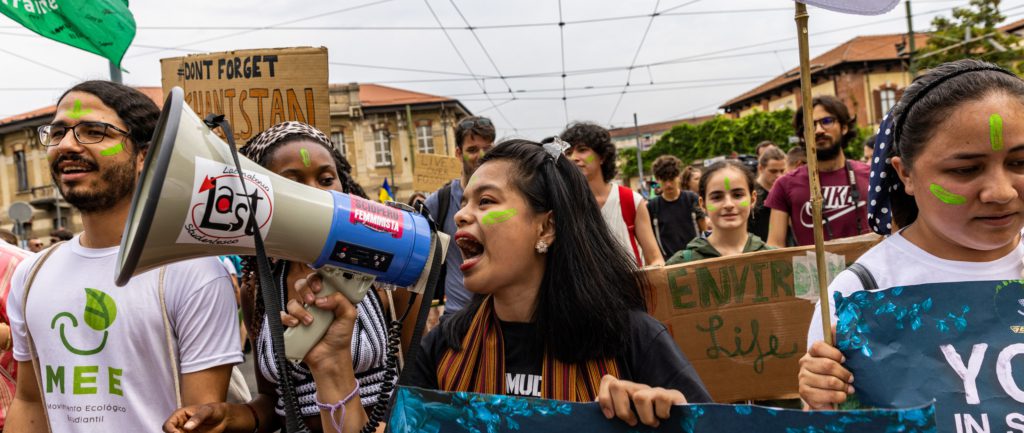[ad_1]
Authorities across the world are increasingly resorting to unlawful use of force and repressive legislation to crush protests, Amnesty International said today, as it launched an interactive digital map that exposes the shocking rise in the repression of protesters by states across the globe.
The global map, which is part of Amnesty International’s flagship global campaign Protect the Protest, charts the numerous human rights violations perpetrated against protesters around the world. It shows how governments treat protests as a threat rather than a right and how law enforcement officials view their role as being to suppress and subdue protesters rather than to facilitate their rights. As a result, thousands of people are being unlawfully dispersed, arrested, beaten and even killed during demonstrations. They also face devastating consequences afterwards, just for participating in protests.
A right, not a privilege
“Peaceful protest is a right, not a privilege, and one that states have a duty to respect, protect and facilitate. However, the right to protest is increasingly under threat, with authorities using unlawful force against people in over 85 countries. From abusive use of force, arbitrary arrest and detention, to torture and other ill-treatment, enforced disappearances and state-sanctioned killings, this map sheds light on the heavy repression suffered by protesters around the world – and it is terrifying,” said Patrick Wilcken, Amnesty International’s Researcher on Military, Security and Policing issues.
“For far too long, authorities across the world have launched a blistering attack on those who peacefully exercise their right to protest— and they have destroyed lives in the process. In Iran, the authorities have unlawfully killed hundreds and arbitrarily detained tens of thousands of people, including children, to crush successive waves of nationwide protests.
Countless protesters have also been subjected to torture and other ill-treatment, including sexual violence, in detention, including those who were sentenced to death after sham, grossly unfair trials and subsequently arbitrarily executed. In China, it is impossible to protest peacefully without facing harassment and prosecution and huge numbers of activists are jailed for speaking out. The list of activists – and countries – under threat keeps growing. This repression must stop now.”
The first of its kind
The interactive digital map, the first of its kind, reveals how many countries misuse less lethal weapons such as tear gas, rubber bullets, pepper spray, and batons to harass, intimidate, punish, or drive away protesters, shutting down their right of peaceful assembly.
“Despite the widespread misuse of less lethal weapons, there is no global control over the production, trade and use of these weapons. It is shocking,” said Patrick Wilcken. “This map highlights the need for an international treaty to regulate the trade in policing equipment so less lethal weapons don’t end up in the hands of abusive police forces.”
As well as pinpointing the countries where protesters suffer abuse and the kind of threats they face, the map also details current legislation on protests, relevant UN publications and international court judgements, and explains how people can take action. Updated in real-time, it presents a chilling picture of the daily reality for protesters across the world.
It is widely recognized that the right to protest was significantly curtailed during the Covid-19 pandemic, given that gatherings in most countries were generally prohibited on public health grounds. Some states, however, used the pandemic as a pretext to further restrict gatherings or to introduce disproportionate restrictions.
According to the Human Rights Measurement Initiative, many countries struggled to bounce back, something that is also visible in its annual rights tracker. For example, Angola scores 3.4 out of 10 on the right to assembly and association in its 2023 Rights Tracker.
Elizabeth Campos, an activist from Angola’s Movement for Women in Politics, reveals the reality of protesting in her country.
“When we attend protests, the experience is always one of near death. We leave, but we are not sure if we will return to our families. It is a country where democracy only exists on paper. Protests can turn very violent, so every time I return to my daughters and grandsons, I celebrate. We constantly suffer from institutional violence in my country.”
Protests can turn very violent, so every time I return to my daughters and grandsons, I celebrate.
Elizabeth Campos, an activist from Angola’s Movement for Women in Politics
Based on Amnesty International’s monitoring, there were credible allegations of state forces using unlawful force against peaceful protesters in 2022 in at least 86 of the 156 countries covered in its annual report. In 37 countries, security forces used lethal weapons against protesters, even though firearms are not suitable for crowd control and the police should never use them to disperse an assembly.
Losing their rights
In India, for example, the authorities have resorted to the use of guns, tear gas, baton charges, internet shutdowns, and even forced evictions against people protesting the government. In China, those who dare to protest risk losing their right to education and housing. Recently, in Peru, the unlawful use of lethal force by security forces resulted in 49 deaths during the protests. Globally, research from Amnesty International reveals that protesters have been arbitrarily arrested in over 50% of the countries covered in its annual report.
“This global map clearly depicts the widespread scale of the repression and restrictions faced by protesters around the world. A litany of serious human rights violations occurs during the policing of protests across the globe, which is a huge concern,” said Patrick Wilcken.
“Marking human rights violations on a map allows us to visualize and track the global scale of the issue. It also exposes the governments that are failing to protect the right to protest and helps to hold law enforcement authorities to account for shocking abuses they commit amid efforts to crush demonstrations. Amnesty International is calling on governments to urgently overhaul their approach, put a stop to this abhorrent violence and ensure they protect and facilitate peaceful protests.”
Background
- The interactive digital map on violence against protesters is available here.
- Amnesty International’s Protect the Protest global campaign challenges attacks on peaceful protest, stands with those targeted and supports the causes of social movements pushing for human rights change. Take action now.
- The Human Rights Measurement Initiative tracks the human rights progress of countries, producing robust data that anyone can use to push for improvements in how governments treat people. It is an independent and non-profit organization.
- In January 2023, more than 30 civil society organizations have joined forces to call for an international treaty to control the trade in tools of torture used to repress protesters and abuse detainees around the world.
[ad_2]
Source link
Author Profile
Latest Entries
 SportsSeptember 30, 2023Nevin seeks to build on her promise with Leicester City – FTBL | The home of football in Australia – The Women’s Game
SportsSeptember 30, 2023Nevin seeks to build on her promise with Leicester City – FTBL | The home of football in Australia – The Women’s Game Women's RightsSeptember 30, 2023Experts back decriminalization as the best means to enhance sex workers’ rights
Women's RightsSeptember 30, 2023Experts back decriminalization as the best means to enhance sex workers’ rights  World NewsSeptember 30, 2023What risks do China’s shadow banks pose to the economy? | Business and Economy
World NewsSeptember 30, 2023What risks do China’s shadow banks pose to the economy? | Business and Economy LifestyleSeptember 30, 2023Costco has begun selling gold bars
LifestyleSeptember 30, 2023Costco has begun selling gold bars



.jpeg)


